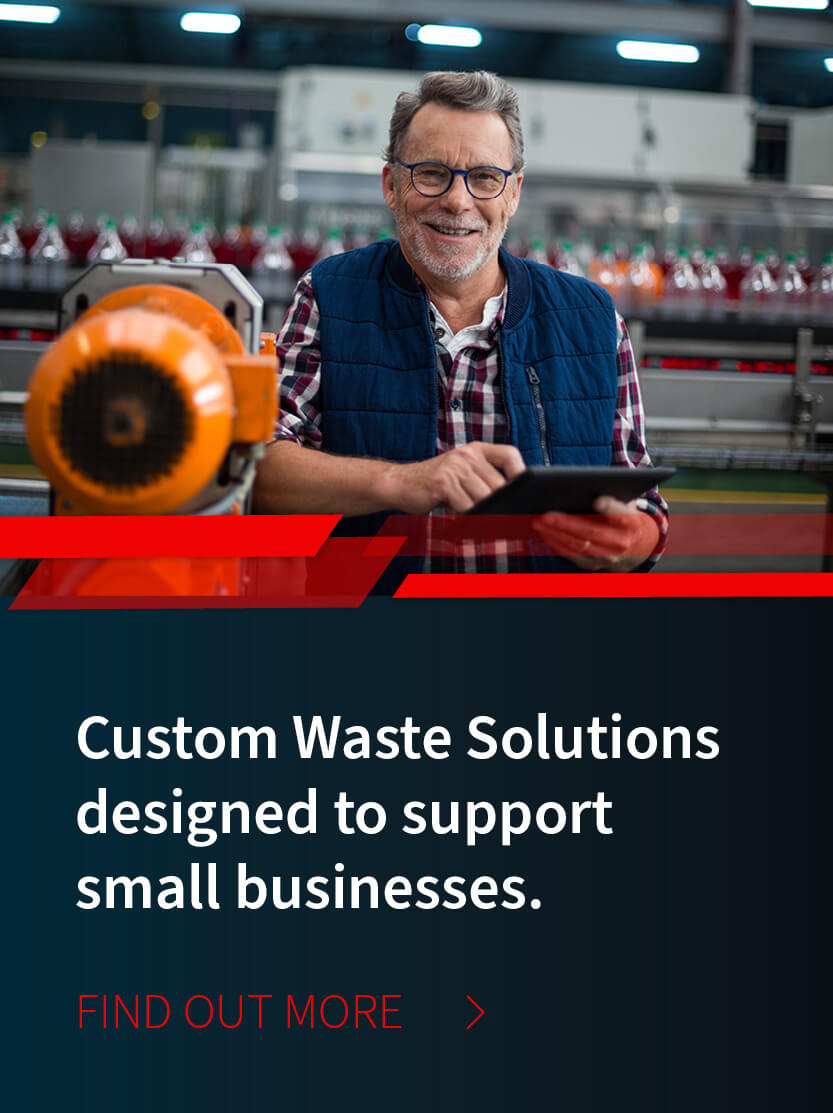
/ IN THIS BLOG
01 / The Whole Foods fiasco
Submitted for your consideration: Back in 2016, this headline appeared across hundreds of news outlets: Whole Foods Reaches $3.5 Million Hazardous Waste Settlement.
You might gasp incredulously, Whole Foods?
And no wonder. Whole Foods strives to make environmental sustainability a major constituent of its brand image. Such values logically correlate with those of its target customers, who gravitate toward additive-free “whole food” that’s minimally processed or refined.
The company’s actual sin appeared innocent enough, having to do with how they disposed of customer returns and out-of-date products that were no longer shelf-worthy.
These included such seemingly innocuous goods as hand sanitizer, liquor, vitamins, etc. Employees just tossed the stuff in the trash. Trouble was, the EPA classifies these things as hazardous waste once they can no longer be used for their intended purpose.
Note: There was no criminal intent.
Nonetheless, there was significant damage to the Whole Foods brand image, as has been the case with other brands making similar mistakes.
02 / The Walmart fiascos
This is the headline Walmart garnered for itself back in 2013 (when the company moniker was still hyphenated): Wal-Mart pleads guilty and settles charges that it dumped hazardous waste in sewage systems, among other violations.
In this well-publicized case, Walmart settled a decade-long investigation into its hazardous waste practices, agreeing to pay $81 million: a case where poor environmental stewardship further eroded a brand image.
The offense was similar to that of Whole Foods: benign products became hazardous waste when they became unsellable. The EPA cited Walmart for neither having a hazardous material disposal program nor training its employees to abide by one—at the store level.
Note: There was no criminal intent.
Were any lessons learned? You decide:
Last December, California officials filed a statewide lawsuit against Walmart alleging that the company illegally disposed of hazardous waste at landfills across the state. (They also did so in 2010.)
The California Attorney General and 12 DAs allege Walmart violated The Golden State’s environmental laws and regulations by dumping hazardous waste products at landfills that aren't equipped to handle the materials.
And what were the hazardous wastes? Not what people generally conjure when they think of hazmat.
Just like before, it’s things like alkaline and lithium batteries, insect sprays, aerosol cans, cleaning supplies, LED lightbulbs, and other detritus that people routinely toss into the municipal waste stream—albeit illegally.:
03 / The Macy’s fiasco
In 2017 Macy's settled with the EPA over hazardous waste violations that allegedly happened in Texas, Oklahoma, Louisiana, and New Mexico.
The EPA charged that Macy's generated 269,168 pounds of hazmat across 44 locations between 2012 and 2015, thereby violating RCRA by exceeding the exemption limits for each store—but the agency did not specify what it was calling a hazardous waste.
But we know, as Macy's had this to say:
“(The EPA alleges) that we had disposed of hazardous waste (primarily liquid and semi-liquid cosmetics) in excess of amounts allowed for certain stores to maintain exempt status. Importantly, Macy’s did not do anything to harm the environment. The wastes were disposed of appropriately, and (we have) policies and procedures in place to safely handle these waste items.”
The company “settled” by agreeing to:
Therefore, a properly filled out hazardous waste manifest will identify the materials and codes (which are numeric) to ensure fast and appropriate responses to not only quickly remedy an accident or spill situation, but also minimize environmental damage and keep people as safe as possible.
Pay $375,000 civil penalty
Develop a program to train their employees on the handling of hazardous waste
Develop a program to help train other retailers in hazardous waste management (i.e. their competitors)
Hire third-parties to conduct periodic audits of its largest facilities in those four states
And remember: it was primarily out-of-date cosmetics that left Macy’s exposed to the ephemeral rules & regulations of the EPA, not the oozing barrels of gurgling hazmat that people typically conjure up when they hear the words “hazardous waste.”
Note: There was no criminal intent.
04 / What’s the upshot?
Hazardous waste management isn’t only a problem for industry and manufacturing. After all, Whole Foods, Walmart, and Macy’s are prototypical business-to-consumer enterprises. Hazardous waste disposal was likely a non-issue for their managers until suddenly it was.
Hazardous waste management is one of the most volatile responsibilities businesses nowadays face. The innocent and/or inadvertent mismanagement of hazardous waste can lay waste to your brand image. And what the EPA considers hazardous waste is not always obvious to your employees who’re incidentally handling your garbage.
05 / Get expert help
MCF Environmental Services is dedicated to providing simple, affordable, sustainable solutions for retailers so that you can focus on running your business without the worry of inadvertent RCRA violations.
We take a “partnering” approach to offer you unsurpassed waste management expertise in such matters as:
Choosing the optimal dumpster(s) for the size of your store(s)
Supplying specific kinds of bins for smooth indoor transit & handling of waste
Recommending specialized equipment for your particular kind(s) of waste stream(s)
Developing conspicuous recycling programs that provide rebates for materials and enhance your brand image with customers
Robert Losurdo
President, COO








